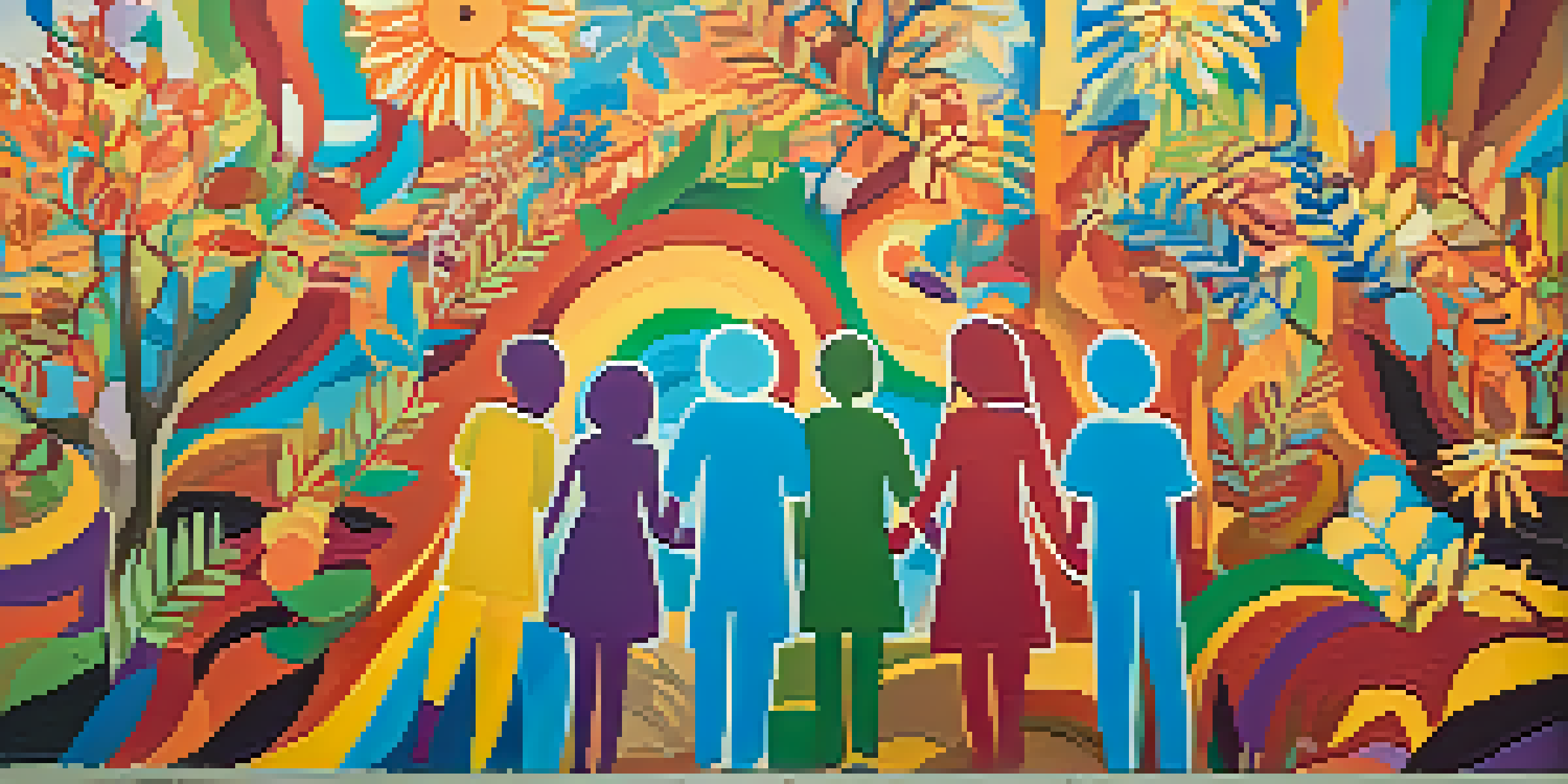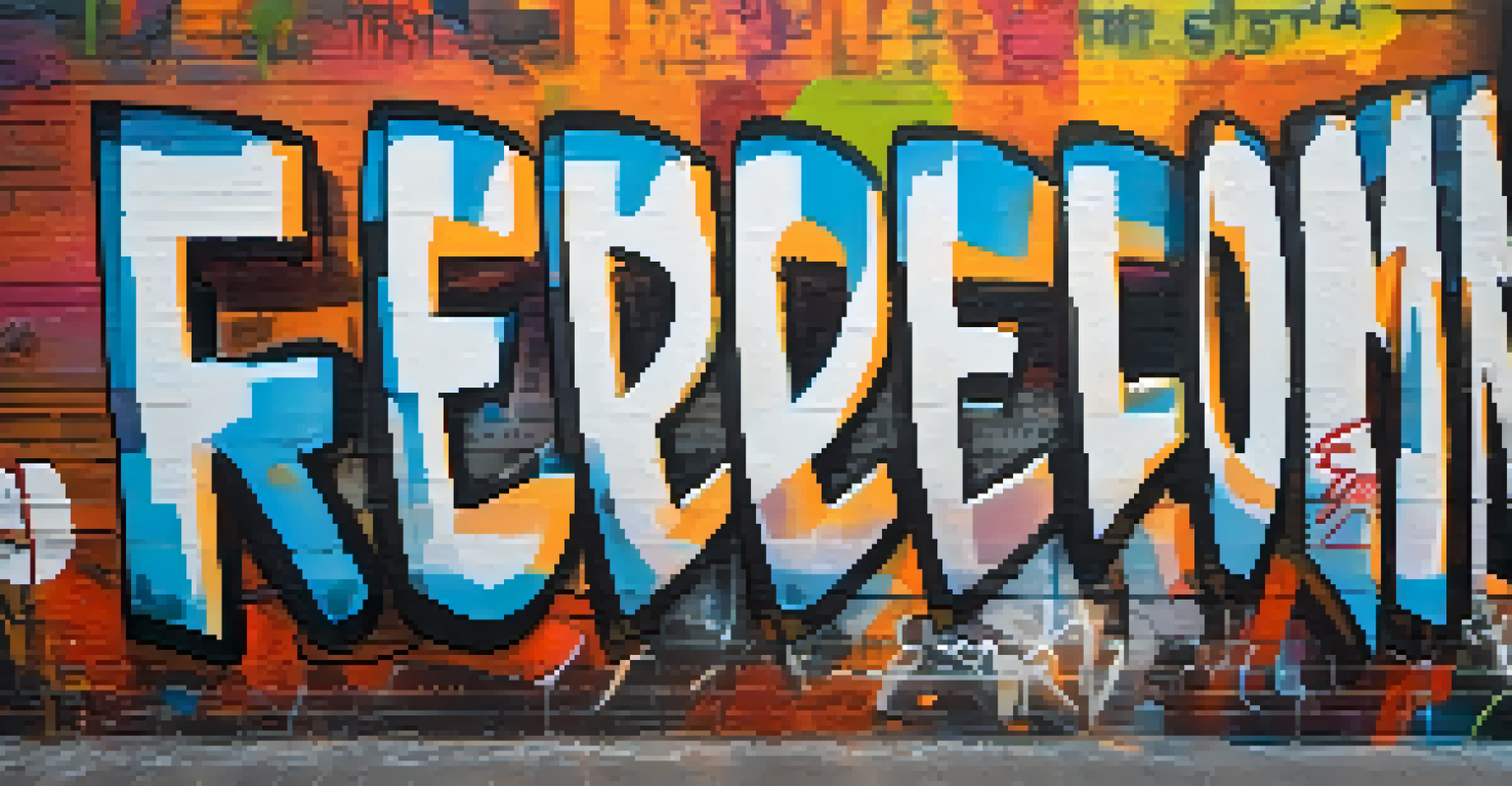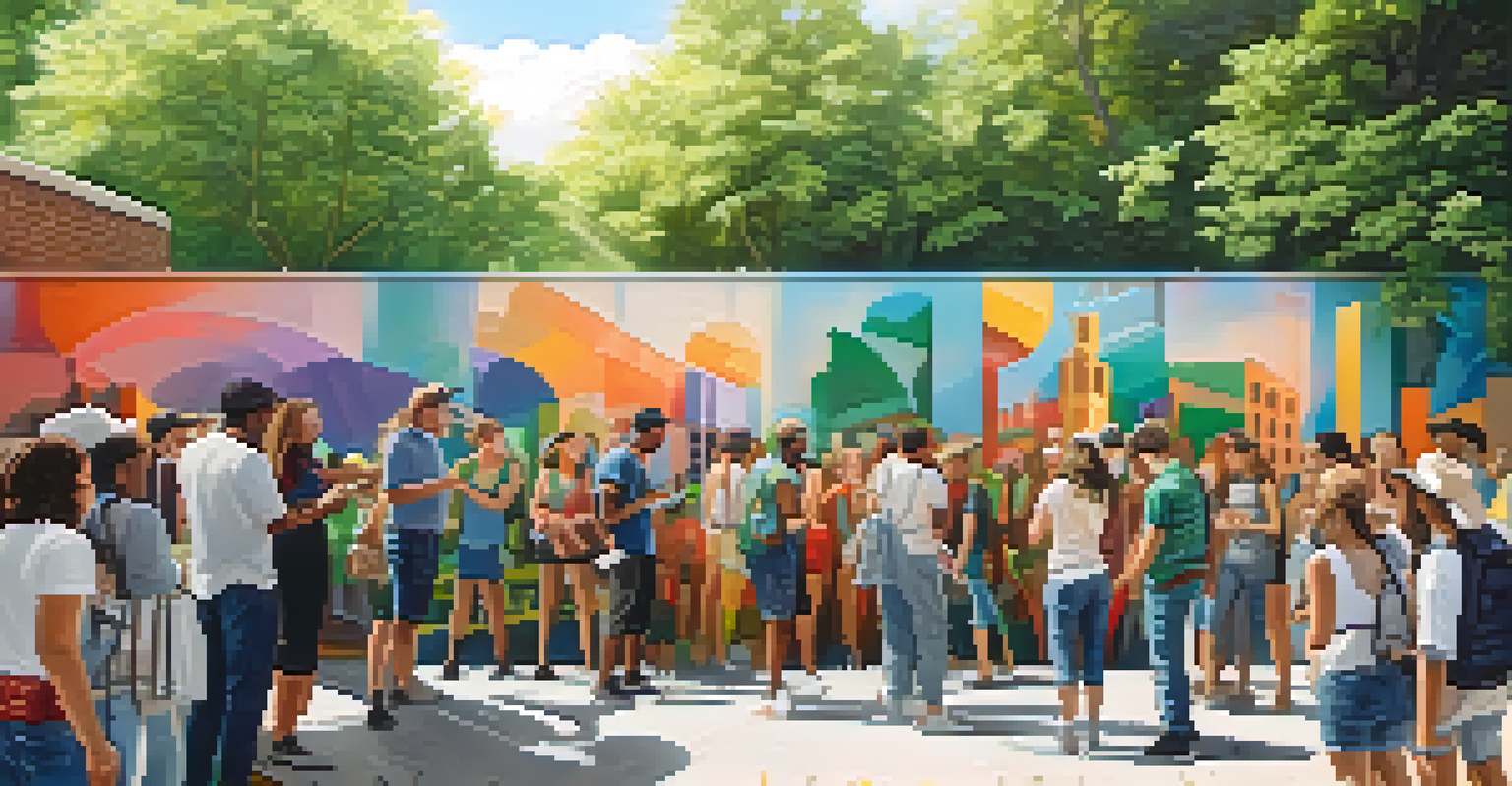Political Commentary Through Street Art: A Case Study

Introduction: The Intersection of Politics and Street Art
Street art has long been a canvas for political expression, reflecting societal issues and activism. Artists often use public spaces to convey messages that challenge the status quo, making their work accessible to a broad audience. This unique form of commentary can transcend language barriers, effectively communicating emotions and ideas in a visual format. In this article, we will explore how street art serves as a powerful medium for political dialogue and resistance.
Art is the most beautiful of all lies.
From graffiti to murals, street art captures the zeitgeist of its time, often responding to current events and injustices. The urgency of political issues can be vividly illustrated through striking visuals, provoking thought and inspiring action. By examining specific case studies, we can better understand the impact of street art on political discourse and community engagement. This exploration reveals the important role of artists as both commentators and activists.
As we delve deeper, we'll look at notable examples of street art that have sparked conversations and movements. These works not only reflect the artists' perspectives but also resonate with the public, creating a shared space for dialogue. This dynamic interaction between the art and the audience is what makes street art a compelling vehicle for political commentary.
Historical Context: Street Art as a Political Tool
Street art has historical roots as a form of resistance, often emerging in times of social unrest. Artists have utilized this medium to protest against oppressive regimes, discrimination, and war, making their voices heard in powerful ways. For example, during the civil rights movement, murals and graffiti became symbols of hope and resistance, uniting communities in their struggles for equality. This historical context provides a foundation for understanding contemporary street art's significance in political discourse.

The evolution of street art can also be traced back to the emergence of urban cultures, where artists began to reclaim public spaces. This reclamation was not only an artistic pursuit but a political statement against gentrification and marginalization. By transforming neglected areas into vibrant canvases, street artists have challenged the idea of who gets to inhabit and define urban spaces. In doing so, they have sparked conversations about identity, belonging, and power dynamics.
Street Art as Political Expression
Street art serves as a powerful medium for political dialogue, allowing artists to convey urgent messages about social issues to a broad audience.
As we reflect on this history, it's clear that street art is more than just decoration; it is a potent form of political advocacy. The blend of creativity and activism creates a unique platform for voices that may otherwise go unheard. Understanding this historical context enriches our appreciation for the messages conveyed through contemporary street art.
Case Study: Banksy and the Power of Anonymity
One of the most recognized street artists, Banksy, has made a significant impact on political commentary through his anonymity. His thought-provoking works often contain satirical elements that critique consumerism, war, and political corruption. By remaining anonymous, Banksy challenges the art world's conventions, allowing his messages to take center stage without the distraction of personal branding. This approach has sparked discussions about the nature of art and the role of the artist in society.
Every artist is a politician.
One notable example is the mural titled 'Girl with a Balloon,' which reflects themes of hope and loss. The image has evolved over time, becoming a symbol of political and social movements. When it was partially shredded during a Sotheby's auction, it ignited debates about the commodification of art and the intentions behind its creation. This incident further solidified Banksy's position as a provocative commentator on contemporary issues.
Through his work, Banksy illustrates how street art can challenge perceptions and provoke critical conversations. His anonymity adds an intriguing layer to his commentary, inviting viewers to reflect on the messages rather than the messenger. This case study exemplifies how street art can inspire activism and dialogue in a world increasingly dominated by social media and digital communication.
Global Perspectives: Street Art as Political Expression Worldwide
Street art is a global phenomenon, with artists around the world using their craft to comment on local and international issues. In countries like Brazil, artists have tackled themes of poverty and inequality, creating murals that resonate with their communities. These works serve not only as artistic expressions but also as calls to action, encouraging viewers to engage with pressing social issues. By examining global perspectives, we can see the universal language of street art in political commentary.
In Egypt, during the Arab Spring, street art became a powerful tool for protest, conveying messages of freedom and resistance against authoritarian rule. Artists transformed walls into canvases for their hopes and frustrations, creating an atmosphere of solidarity and empowerment. This use of public space as a forum for political expression underscores the potential of street art to mobilize communities and challenge oppressive systems.
Community Engagement in Art
Collaboration between street artists and local communities fosters a sense of ownership, turning public art into a collective statement of identity and resistance.
These global examples highlight the diverse ways street art can reflect cultural contexts and political climates. Whether through vibrant murals or poignant graffiti, artists around the world continue to use their skills to advocate for change. This dynamic interaction between art and politics reveals the importance of street art as a medium for global discourse and social justice.
The Role of Community in Street Art Activism
Community plays a vital role in the creation and reception of street art, particularly when it comes to political activism. Many street artists collaborate with local residents to ensure their work resonates with the community's experiences and struggles. This collaboration fosters a sense of ownership and pride, turning public art into a collective statement of identity and resistance. By engaging with the community, artists can amplify their messages and create a lasting impact.
For instance, initiatives like community mural projects encourage local participation, allowing residents to share their stories and perspectives. These projects not only beautify neighborhoods but also serve as platforms for dialogue and empowerment. When communities come together to create art, they forge connections and strengthen their collective voice, making their concerns heard in a powerful way.
Additionally, the response from the community can shape the narrative surrounding street art. Public reactions can vary from appreciation to controversy, reflecting the complexities of political commentary. This dynamic exchange between artists and their audiences highlights the importance of community in the realm of street art activism, where art becomes a shared language for addressing societal issues.
Challenges Faced by Street Artists in Political Commentary
While street art serves as a powerful form of political commentary, artists often face significant challenges in their work. Legal issues are a major concern, as many cities have strict regulations against graffiti and unauthorized murals. This can lead to arrests and fines, deterring artists from expressing their views in public spaces. Despite these obstacles, many artists continue to push boundaries, driven by their commitment to social change and activism.
Another challenge is the risk of misinterpretation or co-optation of their messages. When street art is commodified or removed from its original context, the intended political commentary can be diluted or lost entirely. This can lead to frustration for artists who wish to maintain the integrity of their work. It's essential for viewers to engage with street art critically, understanding the context and messages behind the visuals.
Challenges for Political Street Artists
Street artists face significant challenges, including legal restrictions and the risk of misinterpretation, yet they continue to push boundaries in their activism.
Finally, the ephemeral nature of street art itself poses a challenge. Many works are short-lived, subject to weathering, censorship, or removal by authorities. This transience can be seen as both a strength and a weakness, as it emphasizes the urgency of the messages but also limits their longevity. Despite these challenges, street artists persist, using their creativity to navigate the complexities of political expression in public spaces.
Conclusion: The Enduring Impact of Street Art on Political Discourse
In conclusion, street art remains a powerful and accessible form of political commentary that resonates across cultures and communities. Its ability to provoke thought and inspire action makes it a vital component of social movements and political dialogue. As we have seen through various case studies, street artists serve as crucial voices in the ongoing struggle for justice and equality. Their work encourages us to reflect on our own roles in advocating for change.
The intersection of art and activism highlights the importance of creativity in addressing societal issues. Street art not only beautifies urban environments but also challenges viewers to confront uncomfortable truths about the world around them. This blend of artistry and activism fosters a sense of community and solidarity, reminding us that we are not alone in our struggles.

As we move forward, it is essential to support and uplift street artists who bravely use their talents to speak out against injustice. By engaging with their work and amplifying their messages, we can contribute to a broader conversation about the power of art in shaping political discourse. In doing so, we honor the legacy of street art as a dynamic and transformative force for change.